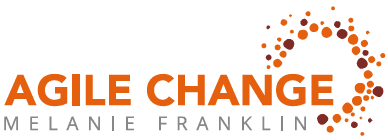I attended an inspiring talk on using neuroscience to create high performing teams by Kamila Sip, Director of Neuroscience Research at Neuroleadership Institute. Three factors emerged as key to excellent team relationships and high performance:
My reflection was how the Getting Started step for each iteration within the Agile Change Roadmap and the use of Sprints within the Making Progress step address these success factors.
Getting Started is formed of two steps:
Discovery is the point at which the Change Manager hands over the objectives of the iteration to the team. This is when the common goal is established. In my experience it is important to ensure this common goal fulfills the following criteria:
Also in the Discovery step there should be a discussion about who is doing what. This is a chance for team members to define their specialist skills and clarify how they think they can deploy these to contribute to the objective and complement the work of other team members. This begins the process of overcoming social loading.
During the Planning step the team identify the inter-dependencies between the activities, and prioritise them. To create a workable plan there has to be horse trading between the team members about what needs to be done first and what can come next. Again this sets the foundations for avoiding social loading because it is very clear how one persons work is dependent on the contribution from other team members.
It is during Getting Started that specific roles are assigned, and this helps to reduce potential team conflict because it reduces mis-match between what a team member thinks they are going to do and what other team members think they are responsible for. Again, it helps to reduce social loading.
Agile Change Management is a great approach to building effective Agile working practices. If you want to learn more, join my agile courses and keep up to date on my latest articles and events through my newsletter https://sunriseirrigation.flywheelsites.com/newsletter/
